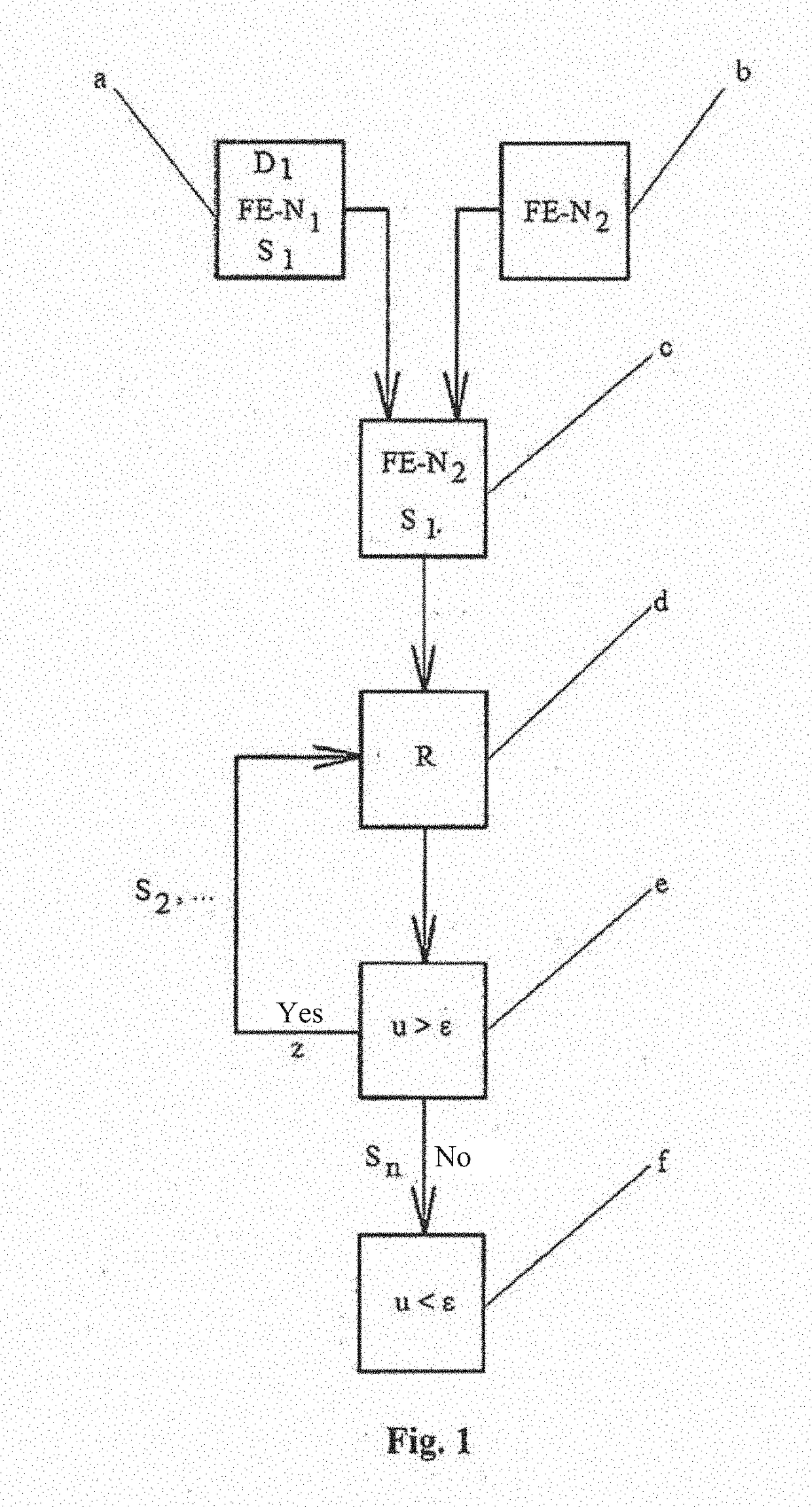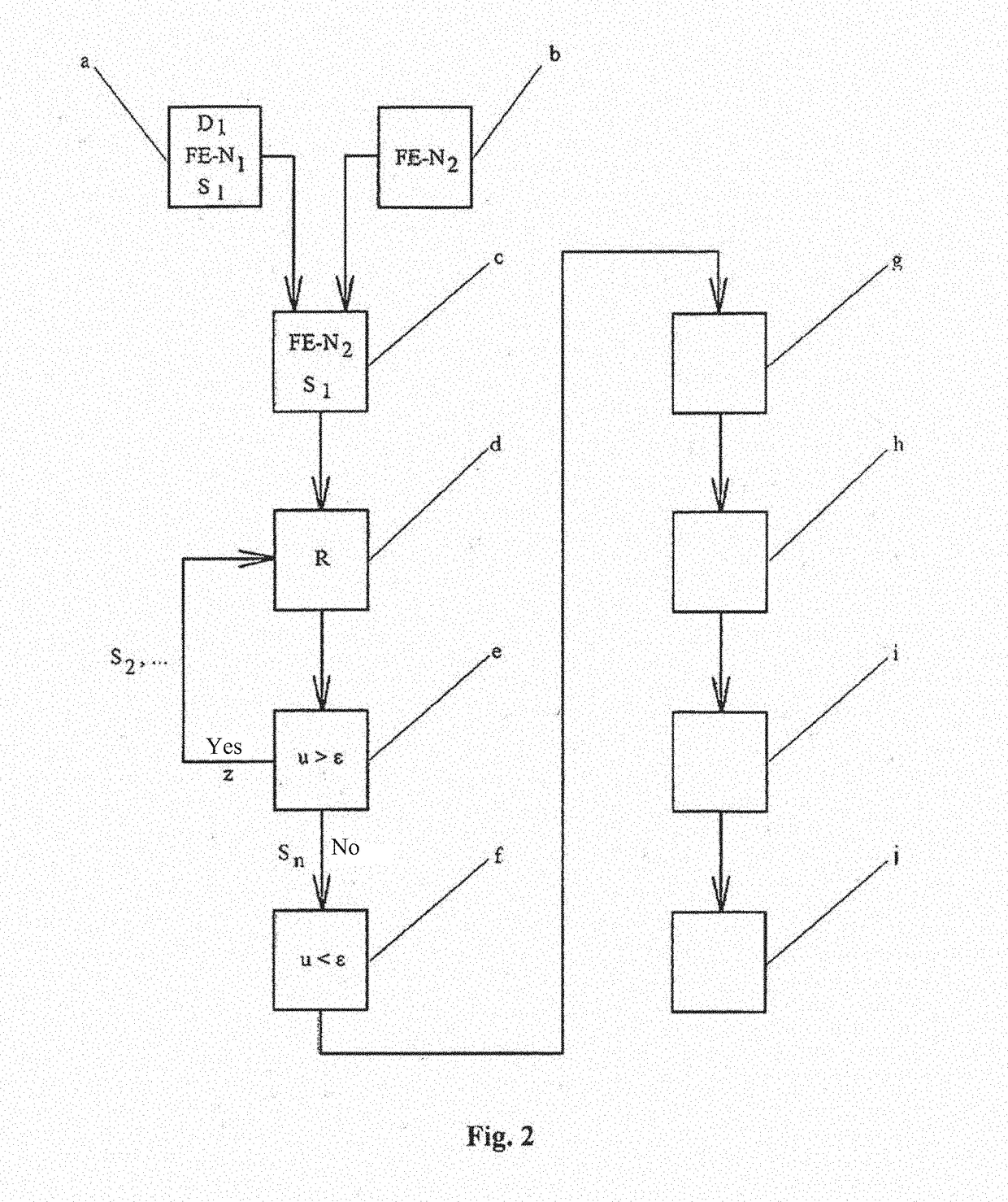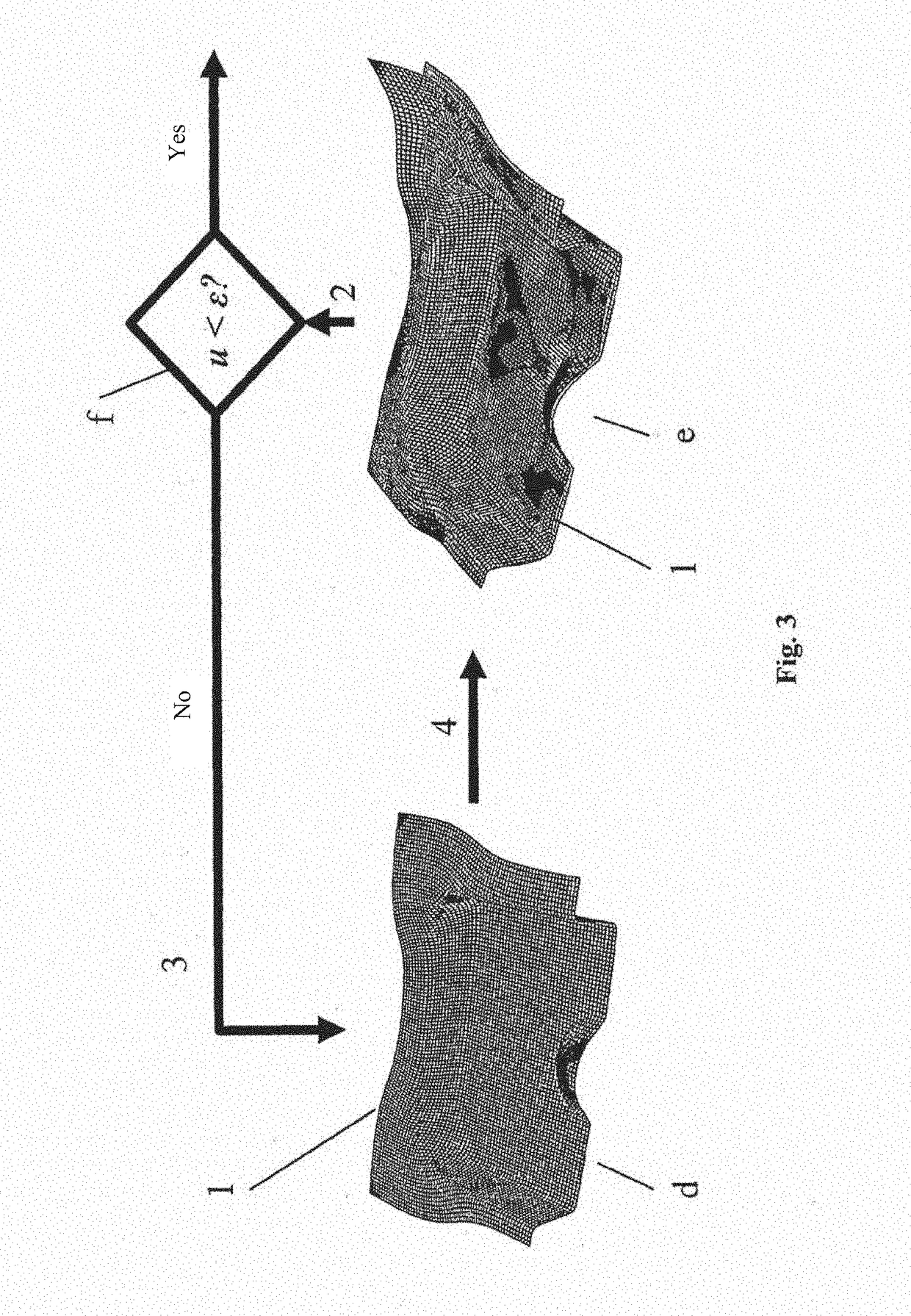Method for transferring a stress state (stress sensor) of an FE simulation result to a new FE mesh geometry of a modeled construction system in a simulation chain of production operations
a technology of stress sensor and simulation result, which is applied in the direction of configuration cad, cad techniques, instruments, etc., can solve the problems of unfavorable transferring of stress, undesired shape alterations, and undesired shape alterations
- Summary
- Abstract
- Description
- Claims
- Application Information
AI Technical Summary
Benefits of technology
Problems solved by technology
Method used
Image
Examples
Embodiment Construction
[0039]FIG. 1 shows a block diagram of the method for transferring a stress state (stress tensor) S1 of an FE simulation result FE-N1 of a modeled construction system or component 1 to a newly to be applied FE mesh geometry FE-N2 of the latest in the simulation chain of a production process according to at least one embodiment of the invention.
[0040]Here, in a step a) a first data set D1 is provided, which describes the FE simulation result with a stress state of the FE simulation with the starting FE mesh FE-N1 of the construction system or component 1.
[0041]In a step b) the new FE mesh geometry FE-N2 (new FE target mesh) is applied to the construction system or component 1, which is associated with a second production operation.
[0042]Subsequently, in a step c) the stress state (stress tensor S1) of the first data set D1 provided in step a) is transferred to the new FE mesh geometry FE-N2 of the construction system or component 1 created in step b).
[0043]Thereafter, in a step d) an ...
PUM
 Login to View More
Login to View More Abstract
Description
Claims
Application Information
 Login to View More
Login to View More - R&D
- Intellectual Property
- Life Sciences
- Materials
- Tech Scout
- Unparalleled Data Quality
- Higher Quality Content
- 60% Fewer Hallucinations
Browse by: Latest US Patents, China's latest patents, Technical Efficacy Thesaurus, Application Domain, Technology Topic, Popular Technical Reports.
© 2025 PatSnap. All rights reserved.Legal|Privacy policy|Modern Slavery Act Transparency Statement|Sitemap|About US| Contact US: help@patsnap.com



